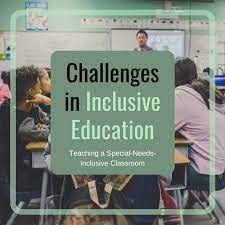Inclusive Education: Disadvantages and Challenges
May 12, 2023
This paper discusses some of the disadvantages and challenges of inclusive education. It is important to that not all students benefit from this type of educational system, and there are a number of potential pitfalls that can arise. Many stakeholders may be concerned with the impact that this kind of educational model has on student performance, as well as the resources needed in order to make it successful.
The first disadvantage to consider when examining inclusive education is its cost. As schools strive to accommodate all learners, they often incur additional financial costs such as training staff, purchasing materials or making physical modifications to classrooms. These additional expenses can be difficult for school districts or individual schools to meet without sacrificing other areas of their budget. Furthermore, in certain cases, parents may be responsible for funding specialized services and resources for their children.

Another disadvantage of inclusive education is that it can be ineffective in addressing the individual needs of students with learning disabilities or other special educational needs. These students may require more specialized instruction and support than what is available in a general classroom setting. As a result, they may become frustrated or fail to progress academically due to the inability of their teachers to provide them with an effective learning environment. Additionally, if these students are placed in classes with diverse learners, they may not receive enough attention and resources relative to their peers who have typical learning requirements.
Finally, one of the most significant challenges posed by inclusive education is its effect on student socialization. Many parents worry that placing their children in inclusive classrooms will limit their social development opportunities. This is particularly true for students with disabilities who may not have the same access to extracurricular activities as their peers or be able to keep up in physical education classes. Furthermore, these students can feel isolated if they are unable to work at the same pace as their classmates or do not understand the material being taught.
In conclusion, while inclusive education has many potential benefits, it also presents a number of disadvantages and challenges that school systems must consider before implementing such a model. From financial concerns to dealing with individual student needs, administrators and educators need to ensure that all stakeholders are aware of the potential pitfalls and take steps to address them in order to create an effective learning environment.
